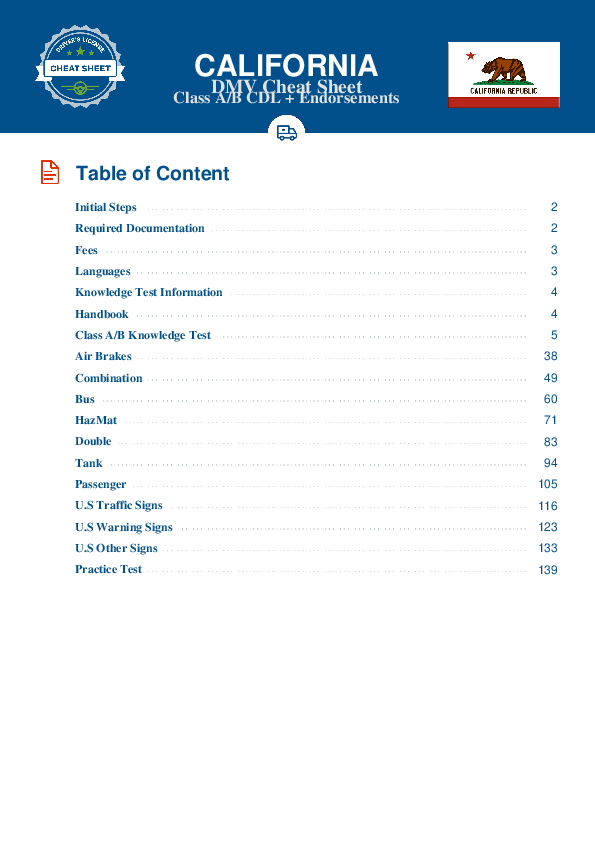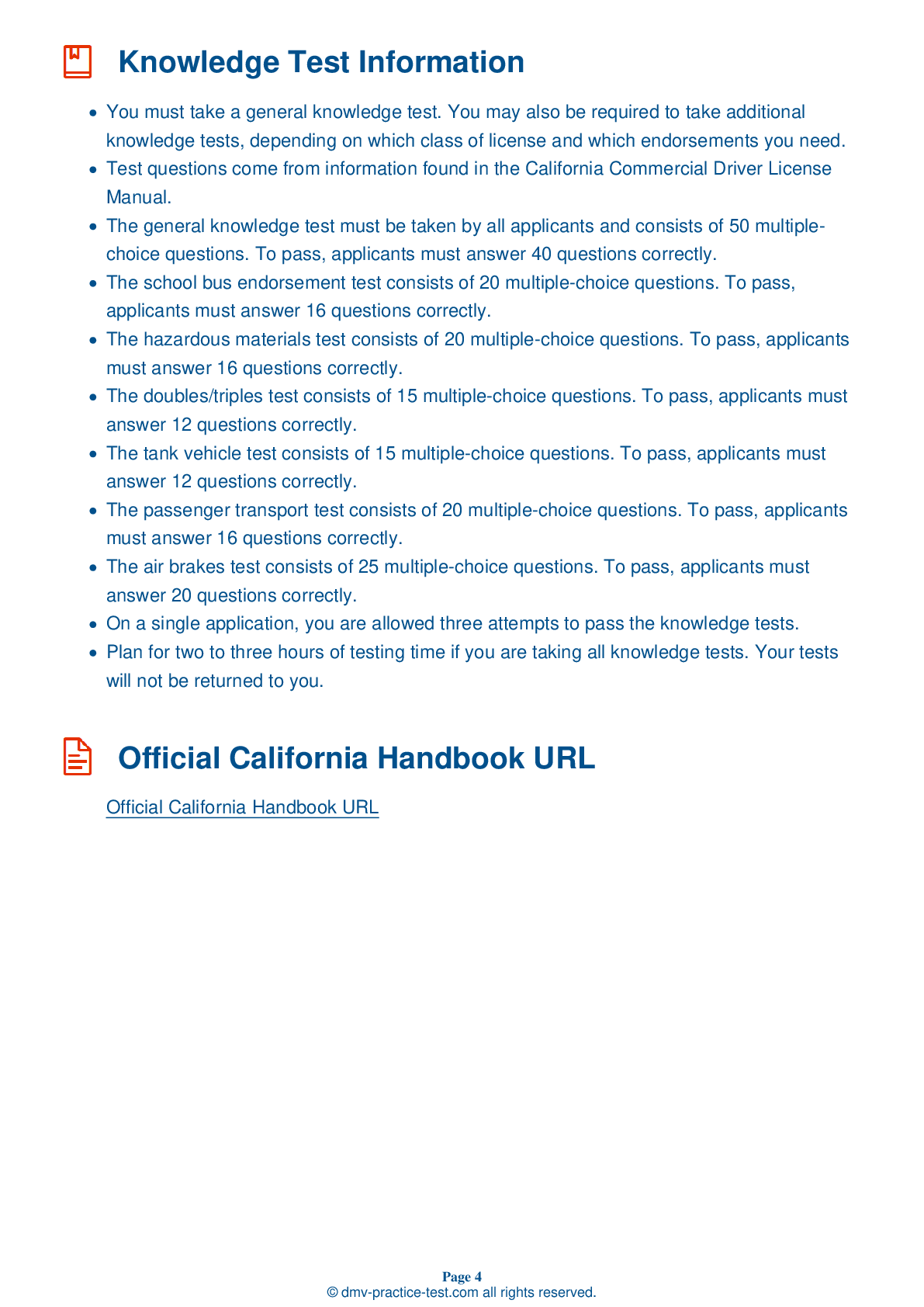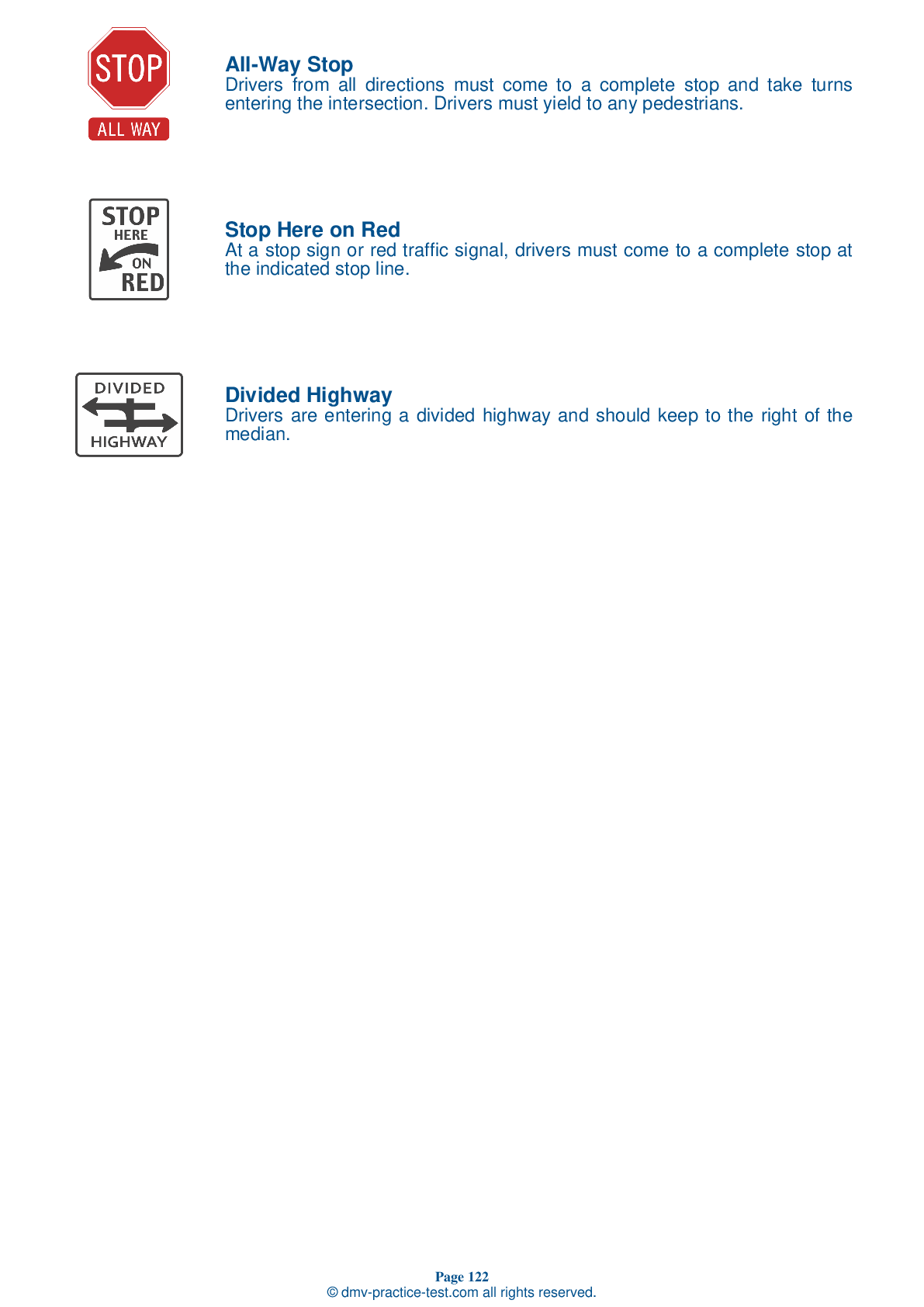HazMat #1
Hazmat Test | California 2025 #1 Page 2 of 3
On our website, we provide FREE practice - CDL hazmat test online! The official exam test consists of several obligatory parts, with all of them checking your knowledge of different blocks of road rules. If you need to obtain a CA CDL hazmat endorsement in 2025, practice as much as possible. Free sample tests published on our website will help you check and improve your knowledge and boost your grades. Please bear in mind that California requirements for issuing a hazmat endorsement for CDL may vary from those established in other states.
20
16
20
8 . A person should not smoke within ____ of a vehicle placarded for Class 3 or Division 2.1 materials.
You should not smoke within 25 feet of a placarded cargo tank used to transport materials that are categorized as Class 3 (flammable liquids) or Division 2.1 (gases). Do not smoke or carry a lit cigar, pipe, or cigarette near a vehicle containing flammable or explosive materials.
9 . During a cargo fire, opening the trailer doors may actually cause the fire to expand because doing so:
When experiencing a cargo fire, it may be a bad idea to open the doors to the trailer. Doing so allows oxygen to enter the area, potentially causing the fire to flare up and expand.
10 . Containers of hazardous materials must be:
Containers of hazardous materials should be braced so they will not fall, slide, or bounce around during transportation.
11 . Shipping papers must include:
Shippers of hazardous materials are required to include an emergency response telephone number on shipping papers.
12 . Placarded vehicles must carry fire extinguishers with a minimum rating of:
5 B:C.
The power unit of a placarded vehicle must be equipped with a fire extinguisher with an Underwriters Laboratories (UL) rating of 10 B:C or more.
13 . How do you label a package if the hazardous materials label will not fit onto the package?
Shippers should place applicable diamond-shaped hazard warning labels on hazardous materials packages. If a label will not fit entirely onto a package, shippers may instead place the label on a tag that is securely attached to the package.
14 . Hazardous materials shipping papers may not be kept:
Shipping papers must be quickly accessible in the event of an emergency. While driving, operators must keep the papers in a pouch on the driver’s door or in clear view and within immediate reach while their seat belt is fastened. Shipping papers may be kept on the driver’s seat when the driver is out of the vehicle.
2025 California | Frequently Asked Questions
A CDL Class B license in California allows drivers to operate single vehicles with a gross vehicle weight rating (GVWR) of 26,001 pounds or more, or tow a vehicle not heavier than 10,000 pounds. This includes buses, farm labor vehicles, and any vehicle towing a vehicle not exceeding a GVWR of 10,000 pounds.
A Class B CDL license in California allows the operation of single vehicles with a gross vehicle weight rating (GVWR) of 26,001 pounds or more, or any such vehicle towing a vehicle not exceeding 10,000 pounds GVWR. This includes buses, dump trucks, delivery trucks, tow trucks, garbage trucks, and other similar vehicles.
To acquire a Class B CDL license in California, you must be at least 18 years old (21 for interstate driving), possess a valid non-commercial driver's license, pass a vision test, complete a medical examination, and successfully complete written and skills tests. You must also have a clean driving record and be able to demonstrate the ability to operate a Class B vehicle.
To qualify for a Class B CDL license in California, you must be at least 18 years old. However, you must be 21 years old or older to operate commercial vehicles across state lines or to transport hazardous materials or waste.
Yes, specific endorsements may be necessary for a Class B CDL license in California depending on the type of vehicle you plan to drive or cargo you plan to carry. For example, endorsements are required for passenger vehicles, school buses, tank vehicles, double/triple trailers, and for carrying hazardous materials.
The Class B CDL skills assessment in California includes three parts: pre-trip vehicle inspection, basic vehicle control, and on-road driving. You must show you can inspect your vehicle to ensure it's safe to drive, demonstrate that you can control the vehicle in various situations, and finally, drive safely in normal traffic conditions.
Class B CDL license holders in California are restricted to driving single vehicles with a gross vehicle weight rating (GVWR) of 26,001 pounds or more, or towing a vehicle not heavier than 10,000 pounds. They cannot operate a Class A combination vehicle unless they have the appropriate endorsement.
Yes, it is possible. The California Department of Motor Vehicles (DMV) offers the written Class B CDL test in multiple languages, including Spanish. However, federal regulations require that all CDL holders understand English to a level that allows communication with the general public, comprehension of traffic signs and signals, and responses to official inquiries.
Yes, you can request accommodations for the Class B CDL written exam in California if you have a disability. The Department of Motor Vehicles (DMV) provides reasonable testing accommodations according to the Americans with Disabilities Act (ADA). This can include extended time, a quiet room, or a sign language interpreter. Contact your local DMV to discuss your needs and arrange accommodations.
Yes, you can retake the Class B CDL written test if you don't pass on your first attempt. In California, you're allowed three attempts to pass the written test within 12 months of paying the application fee. If you fail all three attempts, you must start the process over and pay a new application fee.



